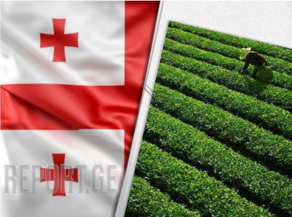
The once-flourishing tea industry in Azerbaijan and Georgia will be revived. The information got announced at a virtual round table supported by FAO and the EBRD to mark International Tea Day. The history of tea production in both countries was reviewed at the meeting. It was noted that Azerbaijan and Georgia are part of the tea-producing region located in the extreme north. In the 1980s, both countries supplied tea to most of the former Soviet Union. At that time, the Soviet Union was the fourth-largest producer of tea globally, after India, China, and Sri Lanka.
"Nevertheless, in the early 1990s, the collapse of the Soviet Union led to a sharp decline in the tea sector in both countries. Today, with a total output of about 3,000 tons, they represent 0.05% of global tea production. Now the interest in Georgian and Azerbaijani tea is growing. In recent years, the governments of both countries have taken steps to revive the tea sector. Azerbaijan approved a development program in 2018 that would increase tea production to 3 000 hectares with an annual output of 8 500 tonnes by 2027 – more than eight times what they produced in 2018," FAO reveals.
Georgian government adopted a program in 2016 to rehabilitate up to 7 000 hectares of abandoned tea plantations over the coming years.
The unique properties of Georgian and Azerbaijani tea were also explained at the meeting: "Azerbaijani and Georgian teas boast unique characteristics thanks to their northerly origins and specific growing conditions along the Caspian and Black Sea coasts. The teas have a bright color and can be produced with almost zero chemicals. This could create interesting opportunities for organic production in both countries."
According to them, the demand for high-quality tea in both local and world markets is growing. The Azerbaijani people are characterized by high tea consumption, drinking more than 2 kilograms of tea per capita. The country ranks among the leading tea-consuming countries such as the United Kingdom, Turkey, and Morocco.
FAO Investment Centre Service Chief Wafaa El Khoury said that a sustainable and forward-looking approach is key to the successful development of Azerbaijan and Georgia's tea sectors, considering potential risks, including those posed by climate change.
Rising temperatures and more irregular precipitation patterns could introduce new pests, posing a threat to the currently limited use of pesticides and putting further pressure on the two countries' water resources.
"Recently published FAO-EBRD publication shows, the potential is there for producers of Georgian and Azerbaijani teas to build on the positive image and, with the right support, carve out a wider space in the international market," FAO reveals.































